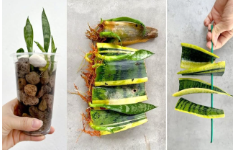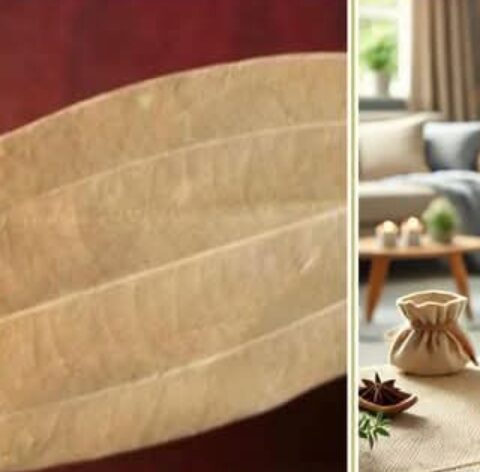Multiply Your Snake Plant the Easy Way: No Stress, Just Green Success 🌿🪴
Imagine turning a single sculptural snake plant into a lush indoor jungle—without expensive tools or complicated techniques. Snake plants (Sansevieria or Dracaena trifasciata) are the epitome of easy indoor gardening, and their natural rhizome clusters and hardy leaves make propagation a breeze. In this guide, you’ll learn three foolproof methods to multiply your snake plants, insider tips for healthy new babies, and answers to all your burning FAQs. Get ready for effortless, eco-friendly plant propagation!
Why Propagate Your Snake Plant?
- Cost-Effective Growth: One plant can yield dozens of new pots—no need to buy extras.
- Perfect Gifts: Share clonal pups with friends and family for a thoughtful, green present.
- Easy Maintenance: Snake plants are drought-tolerant and forgiving, ideal for beginners.
- Rapid Expansion: See new roots and shoots in just a few weeks with the right technique.
Materials You’ll Need
- A healthy snake plant in a pot
- Sharp, clean knife or garden shears
- Well-draining potting mix (cactus & succulent blend recommended)
- Small pots or propagation tray
- Water-tight containers or glasses (for water method)
- Labels and marker
- Optional: Rooting hormone powder for faster root development
3 Easy Methods to Multiply Your Snake Plant
1. Rhizome Division: Quick & Reliable
- Gently remove the plant from its pot and shake off excess soil.
- Locate natural rhizome clusters (thick underground stems) and separate them by hand or with a clean knife.
- Ensure each division has at least one healthy leaf fan and a portion of roots.
- Replant divisions in fresh potting mix, water sparingly, and place in bright, indirect light.
Pro Tip: Dust cut edges with rooting hormone to give new divisions a growth boost.
2. Leaf Cuttings in Soil: Snip & Set
- Select a mature, undamaged leaf and cut it into 3–4″ sections.
- Allow cut ends to callus for 24 hours on a dry surface.
- Insert the bottom end of each segment ½–1″ deep into moist, well-draining soil.
- Keep soil lightly moist and place in indirect light; roots will form in 4–6 weeks.
Pro Tip: Label each pot with date and leaf section number to track success rates.
3. Leaf Cuttings in Water: See-Through Success
- Cut leaf segments as above and let them callus for a day.
- Stand each section upright in a glass of clean water with the cut end submerged about 1″.
- Change the water every 5–7 days to keep it fresh.
- Once roots reach 1–2″ long, transplant cuttings into soil.
Pro Tip: Use a clear glass so you can monitor root growth and spot any rot early.
Care Tips for Your New Snake Plants
- Light: Bright, indirect light encourages faster growth—avoid harsh midday sun.
- Water: Allow soil to dry out completely between waterings; overwatering leads to rot.
- Soil: Use a gritty, well-draining cactus/succulent blend for optimal aeration.
- Temperature & Humidity: Keep between 60–85°F (16–29°C); average home humidity is fine.
- Fertilization: Feed lightly with a balanced, diluted houseplant fertilizer during the growing season.
10 FAQs About Snake Plant Propagation
- Can I propagate snake plants any time of year?
Best results occur in spring or summer, but divisions work year-round. - How long before I see new growth?
Rhizome divisions sprout leaves in 4–8 weeks; leaf cuttings may take 6–12 weeks. - Do I need rooting hormone?
No, but it can speed root initiation and improve success rates. - Why are my leaf cuttings rotting?
Often due to overwatering or lack of callusing—let cuts dry fully before planting. - Can I use regular potting soil?
Heavy soils retain moisture; choose a succulent mix to prevent soggy roots. - Will propagated snake plants look like the parent?
Yes—they’re clones, so leaf variegation and shape remain identical. - How do I avoid pests?
Keep tools clean, use fresh soil, and monitor for scale or mealybugs. - Can I propagate multiple cuttings in one pot?
Yes, but give each cutting 2–3″ of space to avoid crowding. - What’s the ideal container for water propagation?
A narrow glass or jar that supports leaves upright without submerging too much. - How do I know when to transplant water-rooted cuttings?
When roots reach 1–2″ and look plump, move to soil immediately.
Related Articles & Further Reading
- Ultimate Indoor Seed-Starting Guide
- DIY Succulent Arrangements for Every Space
- Top 5 Organic Fertilizers for Your Houseplants
- Complete Care Guide for Dracaena & Sansevieria






